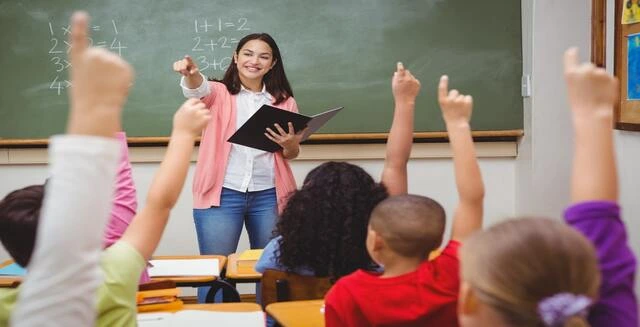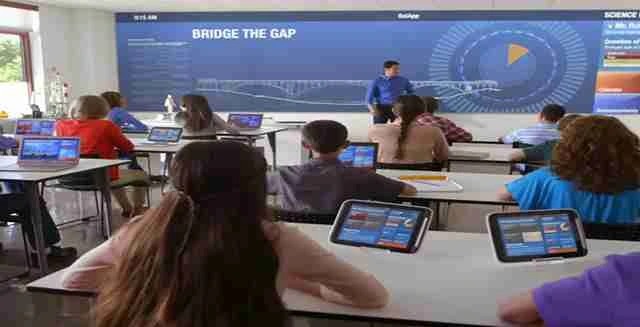
In today's classrooms, good communication is one of the most important components of building an interesting and successful learning environment. Teachers and students both rely on clear, succinct communication to exchange ideas, solve problems, and build understanding. But what is good classroom communication, and how might it improve student engagement?
In this blog, we'll look at the significance of communication in the classroom, offer practical ideas for enhancing it, and demonstrate how these techniques can boost student engagement. In addition, we'll provide an overview of communication class ideas that every educator should understand. Using tools like a school management system can also streamline communication and improve overall classroom efficiency. Let's look at how to make communication a valuable tool for improving classroom experiences.
The Importance of Communication in the Classroom
Effective communication is essential in all classrooms. Without it, students may feel detached, misunderstand tasks, and struggle to remain focused in their studies. Communication in the classroom is more than just teachers talking and students listening; it is about fostering an environment in which ideas are exchanged, questions are encouraged, and constructive criticism is provided.
For example, when a teacher describes a concept in language that pupils understand, they are more likely to comprehend the material. On the other side, when directions are unclear or unduly convoluted, children may grow annoyed and distracted. Effective communication ensures that both teachers and students are on the same page, so improving the entire learning experience.
In addition to improving comprehension, effective classroom communication fosters trust and connection between teachers and students. When students feel heard and appreciated, they are more likely to participate actively in class discussions and be eager to learn. This sense of inclusion may substantially enhance the dynamics of any classroom.
Intro to Communication Class Concepts
Before we get into the tactics for increasing classroom communication, it's important to understand some fundamental concepts that every teacher should comprehend. Consider this an introduction to communication for educators, with a concentration on classroom communication styles.
Verbal communication
This is the primary mode of communication in a classroom. Teachers present lessons verbally, and students respond with questions or remarks. While it may appear straightforward, tone, clarity, and word choice are critical to ensure that the information is effectively conveyed.
Nonverbal communication
Involves body language, facial expressions, and gestures during class. A teacher's passion can be shown by posture, eye contact, and hand gestures, making the class more engaging. Conversely, a lack of nonverbal communication, such as avoiding eye contact, might leave children feeling detached.
Written communication
Includes emails, handouts, and classroom directions. Making sure these are clear and easy to comprehend is critical for helping students follow instructions and finish projects effectively.
These basic communication forms are utilized frequently in the classroom, and understanding how they interact is critical to increasing participation.
Strategies for Effective Classroom Communication
Teachers can use a variety of tactics to build a better learning environment, including encouraging more effective communication in the classroom. The following are some easy yet effective strategies for improving classroom communication and keeping students engaged.
Active Listening
Effective communication is more than just speaking clearly; it also includes listening. Teachers that actively respond to their students' concerns, questions, and feedback foster a more inclusive environment. Active listening demonstrates to pupils that their opinions are appreciated, which enhances their confidence and encourages greater participation. Simple actions such as nodding, repeating what the student said, and asking follow-up questions can have a significant impact.
Clear and concise instructions
One of the most significant impediments to student participation is uncertainty. When instructions are unclear or overly complicated, children may become overwhelmed and withdraw. Teachers should focus on giving clear and simple directions. For example, breaking down complex activities into smaller, more accessible steps helps boost students' confidence in their work.
Use of Visual Aids
Visual aids like charts, photos, and videos can help make lessons more entertaining and understandable. These tools supplement verbal instructions and help pupils recall information better. For example, presenting a picture to describe a scientific idea might help students visualize the subject and make it more understandable.
Encouraging student participation
Engagement flourishes in a two-way communication setting. Encouraging students to ask questions, express ideas, and participate in conversations helps them feel like they are actively contributing to the learning process. This not only keeps students interested, but also reinforces their comprehension of the content.
Providing feedback
Regular feedback is an important part of good classroom communication. Constructive feedback helps pupils realize what they're doing well and where they might improve. When feedback is specific, timely, and positive, it can inspire students to work harder and remain involved in their studies.
The Role of Technology in Classroom Communication

In today's digital world, technology has changed how we communicate in the classroom. Learning communication management systems, discussion boards, and virtual classrooms are examples of tools that have expanded classroom communication opportunities.
An email warming service, for example, can help professors and students communicate more effectively in virtual classrooms. Teachers can maintain clear channels of contact even when teaching remotely by ensuring that emails are sent to students' inboxes and do not get lost in spam filters. Furthermore, online platforms enable students to ask questions and participate in conversations outside of regular lecture hours, increasing opportunities for involvement.
Online quizzes, video tutorials, and real-time polls can all help to increase student engagement by making lessons more interactive. These technologies inspire students to interact with the information in a variety of ways, accommodating different learning styles.
Building a Culture of Open Communication
Creating a classroom culture that emphasizes open communication is critical to sustaining long-term participation. Students who are comfortable expressing their thoughts and ideas are more likely to participate in class discussions and cooperate with their peers.
One method to foster this culture is to establish the expectation that all views and questions are welcome in the classroom. Teachers can encourage students to share their ideas by rewarding involvement and fostering an environment in which mistakes are viewed as learning opportunities.
Collaborative projects that require teamwork promote communication among pupils. Group work teaches students how to communicate successfully with one another, allowing them to build skills that will be useful in both academic and professional situations.
Conclusion
Effective classroom communication management is the foundation for student involvement. By strengthening our communication with students, we can foster a more dynamic and inclusive learning environment in which everyone feels heard and respected. Small modifications in how teachers communicate, such as active listening and the use of technology, can lead to major increases in student participation and learning results.
Incorporating these tactics into your teaching practice will not only improve communication in the classroom, but will also foster engagement and understanding. Begin implementing these communication tactics today and see how they improve your students' engagement and success.If you want to learn more about communication system, check out our blog What Factors Should Small Schools Consider When Choosing a Communication System?